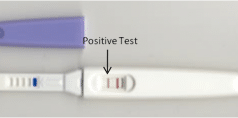
Nurses play an essential role in the healthcare system. According to studies, having an adequate number of nurses in hospitals and other healthcare facilities improves patient safety, mortality rates and overall patient outcomes. However, having enough nurses to care for patients is not always easy. In addition to creating new roles, the positions vacated by nurses who are expected to retire or leave the profession must also be filled. This will result in 175,900 registered nurse (RN) job openings per year until 2029, according to the US Bureau of Labor Statistics.
Maine and the United States more broadly are experiencing a critical nursing shortage, expected to last until 2030. This post will look at how this complex issue arose, what the statistics reveal and what strategies nurses can use to overcome the challenges it presents. Throughout the COVID-19 pandemic, the bravery and dedication of America’s nurses have been featured on front pages across the country. However, the pandemic has significantly strained nurses and the healthcare system, partly due to a lack of staff and resources. The nursing shortage in the US began long before the pandemic thrust it back into the spotlight.
How Did The Nursing Shortage Begin?
Most nurse shortages in the 20th century were caused by increased utilization of registered nurses. This is precisely what happened in the mid-1930s when a confluence of technological, economic and healthcare-related events increased demand for registered nurses and laid the groundwork for a shortage. Increased hospital use, changes in hospital construction, more technologically complex patient care requirements and a reduction in nurse working hours all necessitated an increase in the number of nurses needed to deliver bedside care during the 1930s.
As the US prepared for war in the early 1940s, the country’s ongoing nursing shortage became even more acute. To make matters worse, supply-side issues emerged to exacerbate the existing demand-side difficulties. While the US military gathered sufficient resources for the war effort – 77,000 nurses joined the military services by the end of the war – these nurses were not, on the whole, newly trained additions to the workforce. Instead, they came from the civilian sector, which had lost about a quarter of its pre-war nurses. Moreover, even the pool of potential replacement nurses – those without nursing training or experience who fit the typical nursing demographic – faced stiff competition from other industries. Fast forward to today, and the problem appears to be only getting worse.
As the population of the US ages, the demand for healthcare is increasing at an unprecedented rate. According to the United States Census Bureau, the entire baby-boom generation — 73 million people — will be 65 or older by 2030. Because people live longer lives than ever, these older adults require more health services. According to the Centers for Disease Control and Prevention, 19% of people over 55 have three or more chronic conditions. Caring for these compounding conditions will further strain healthcare resources. Not to mention, an aging population does not affect all regions equally. Age-related healthcare demands will be greater in areas with older-than-average populations, such as Florida and Maine, than in younger states.
How To Solve The Crisis
Some organizations offer large sign-on bonuses and advertise significant salary increases for critical specialties such as intensive care to attract much-needed nurses. However, rising stress levels and increasing reports of nurse burnout make incentives like these only a temporary solution. In addition, job dissatisfaction is growing due to increased workloads, longer hours and a lack of resources to provide patients with the best care. Therefore, we must look at alternate solutions.
A higher education system capable of producing enough nursing graduates to meet the demands of the healthcare system is critical to developing a strong nursing workforce. Many experts suggest that Congress pass legislation to invest in nursing faculty, clinical placements and nursing programs like accelerated BSN programs online at providers such as Baylor so that colleges and universities can enroll and graduate more students. Policy makers should also invest in programs that assist nurses with associate degrees in obtaining bachelor’s degrees, which will help improve many nurses’ training, wages and career paths.
Furthermore, federal lawmakers should fund clinical placements for students from underrepresented groups and those attending under-resourced colleges. A longer-term vision and collaboration among federal and state policymakers, educators, nurses and other healthcare leaders are also required to prepare us for the next pandemic or unforeseen healthcare system disruption. Finally, we need a permanent body to document healthcare shortages and provide policy recommendations for the nursing pipeline and working conditions.
Another solution could be for hospitals and healthcare facilities facing nursing shortages to seek long-term solutions through international recruitment. This method of filling job vacancies was standard in the early 2000s. Still, visa processing delays beginning in 2007 and the Great Recession in 2008 caused many recruitment programs to be scaled back or canceled.
Fortunately, visa processing times have significantly improved over the last decade. In addition, before relocating to the US, international nurses can take the NCLEX RN exam at test centers worldwide. This expedites the immigration process as government policies continue to shift toward using visas to permanently bring in highly skilled professionals who will live in the US.
Conclusion
Although the impact of COVID-19 is gradually diminishing in hospitals across the country, the US healthcare system remains critical. As they work to retain their current RN staff, many healthcare facilities are looking for other ways to alleviate the nursing shortage. They must contend with a scarcity of resources, high turnover rates and other career opportunities diverting nurses from bedside work. Long-term solutions are required for hospitals to retain their current RN staff to provide consistent patient care.








